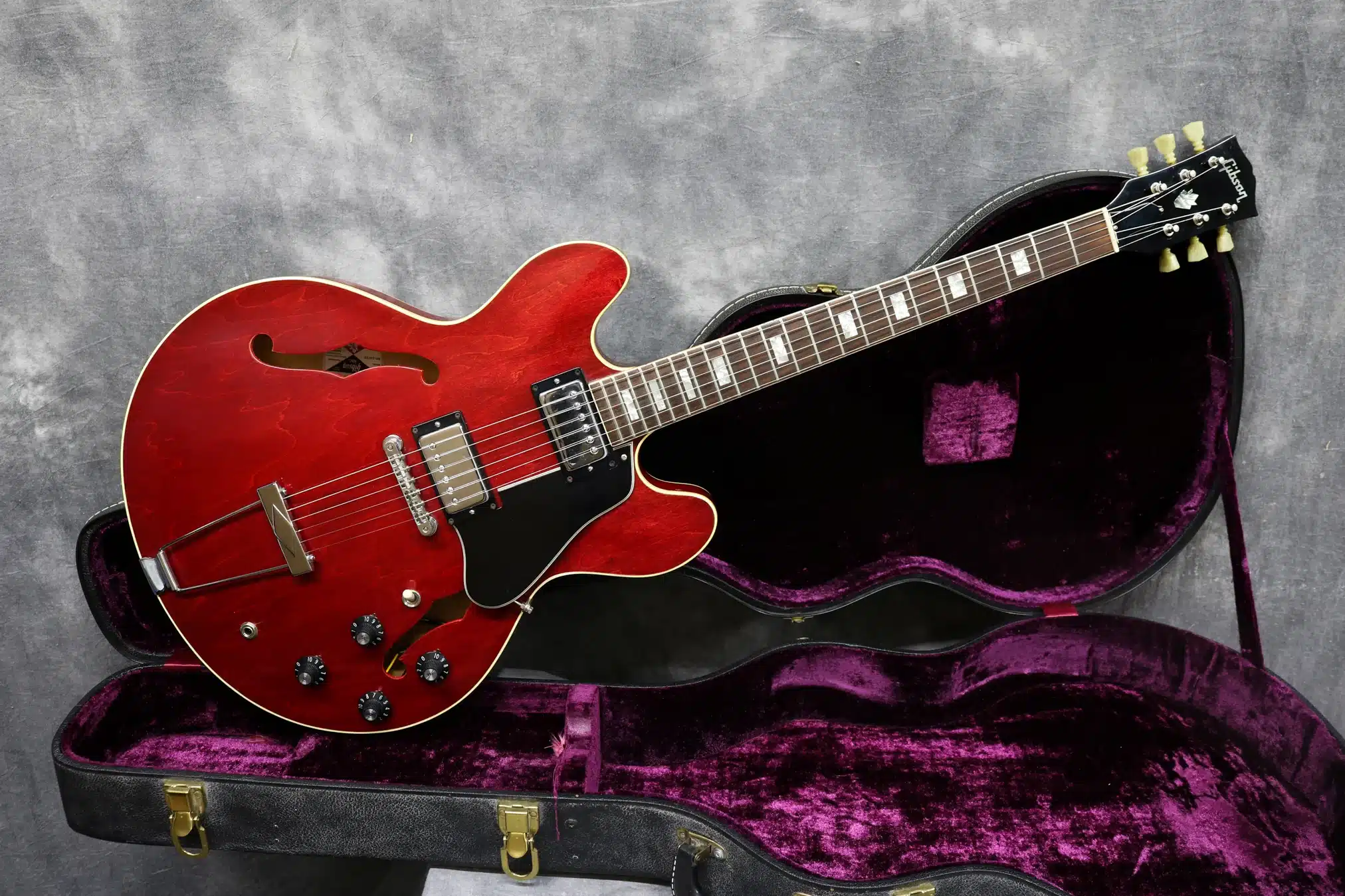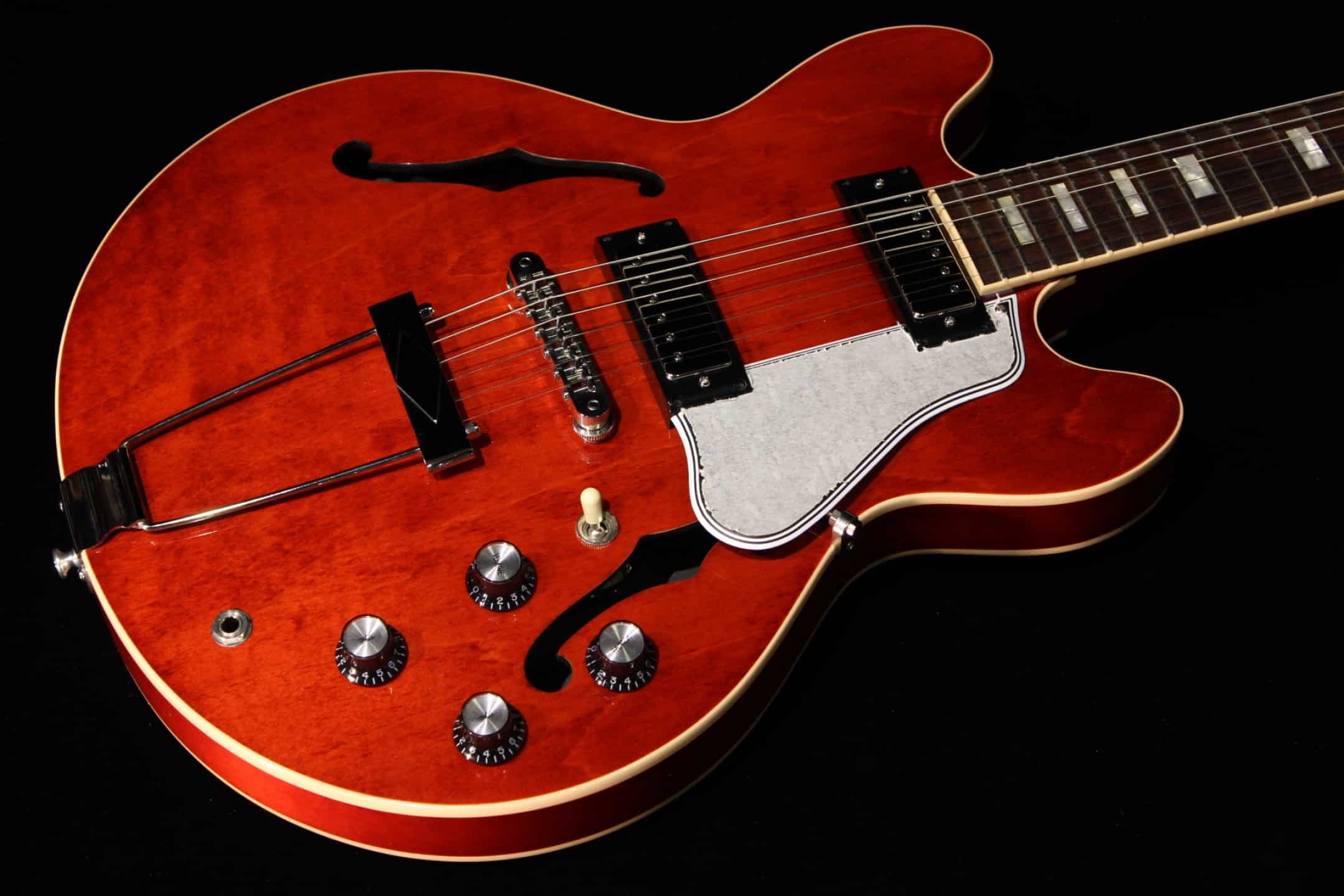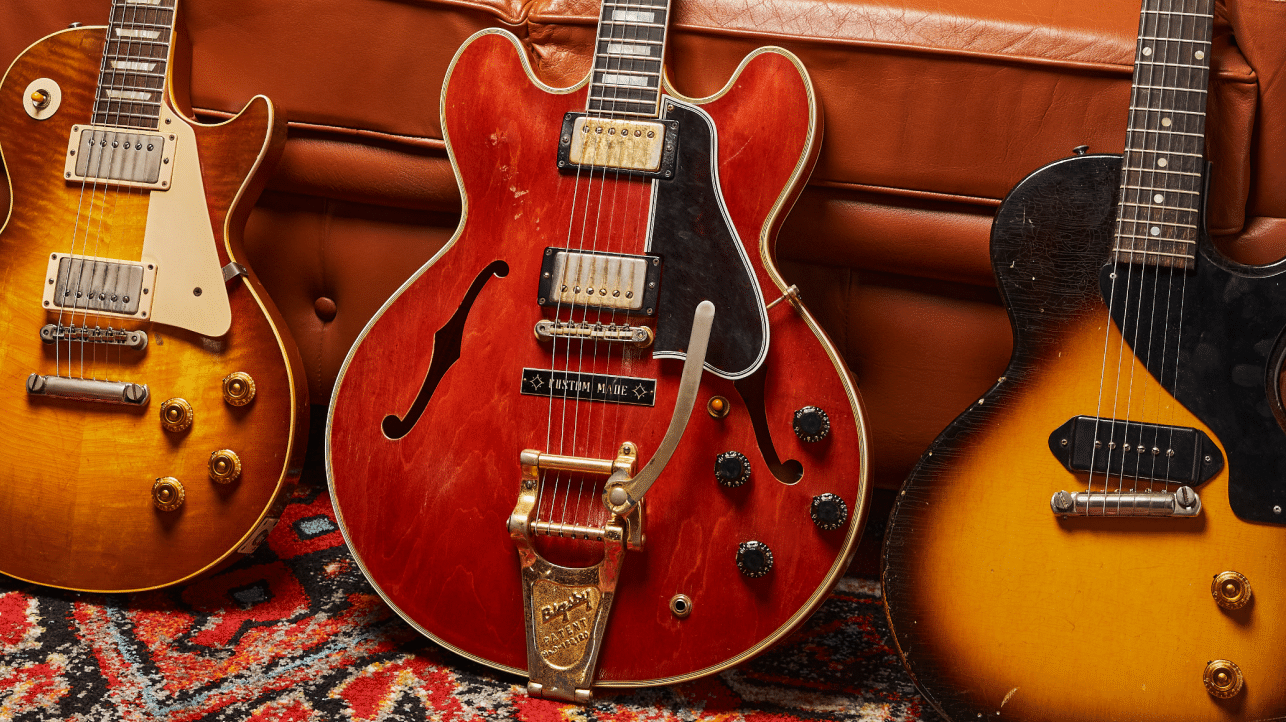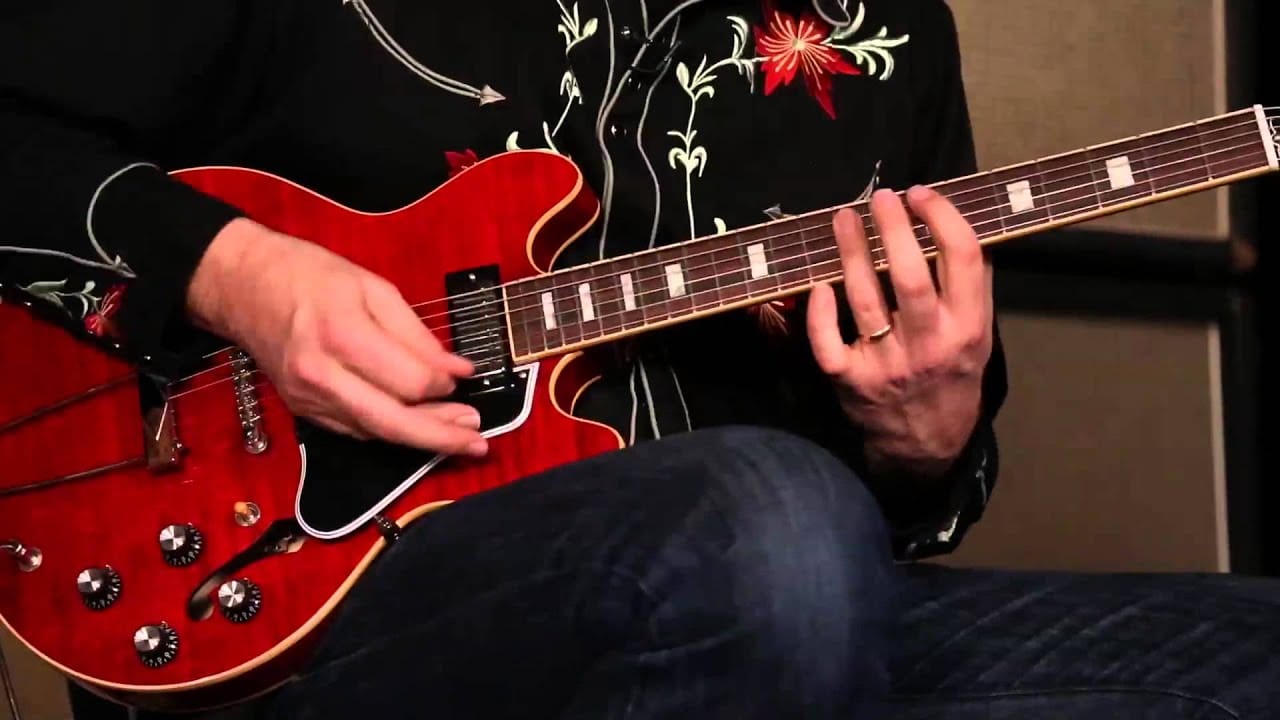Contents
Among electric guitars that have hit the market, not many manage to leave an impression as lasting as the iconic Gibson ES-390 and 335. At a glance, both Gibson guitars resemble each other in many regards but a few differences exist in terms of design, sound, etc. Unable to decide which guitar is superior once it comes to Gibson ES-390 vs. 335 and need some help? Then look no further because you can find exactly what you want in our article.
Background Of The Guitars

In case you don’t know, ES-390 and 335 belong to the long-running ES (Electric Spanish) guitar line of Gibson. Introduced to the market in 1958, ES-335 was a groundbreaking guitar that merged the best qualities of solid-body and hollow-body guitars. As the first commercially available, mass-produced semi-hollow electric guitar, it set the foundation for many of the following models. Meanwhile, taking inspiration from ES-335, ES-390 was marketed as a more compact and versatile successor to ES-335 upon release.
Gibson ES-390 Vs. 335: Analysis
| Gibson ES-390 | Gibson ES 335 | |
| Body Material | Maple/Poplar/Maple Laminate | Maple/Poplar/Maple 3-Ply |
| Neck Material | Mahogany | Mahogany |
| Neck Shape | Small 60s Shape | Rounded “C” |
| Fingerboard | Rosewood | Rosewood |
| Inlays | Mid ’60s Block Inlays | Dot |
| Scale Length | 24 3/4″ | 24 3/4″ |
| Nut Width | 1 11/16″ | 1.695″ |
| Pickups | Mini Humbuckers/P90 | Neck Pickup: Calibrated T-type Rhythm HumbuckerBridge Pickup: Calibrated T-type Treble Humbucker |
| Controls | 2 Volume, 2 Tone, 3-Way Switch | 2 Volume, 2 Tone, 3-Way Selector Switch |
| Hardware | Chrome | Nickel |
| Tuners | Kluson | Vintage Deluxe with Keystone Buttons |
| Bridge | ABR | ABR-1 Tune-O-Matic |
| Tailpiece | Trapeze Tailpiece | Aluminum Stopbar |
| Case | Black Hardshell Case | Gibson Brown Hardshell Case |
Design
ES-390 packs a slightly smaller and lighter body compared to ES-335. Its thin and slim construction makes the guitar easy to handle for extended playing sessions. ES-390’s small size and lightweight frame contribute to fantastic playability, especially for those who desire compact instruments. Needless to say, it’s popular among guitarists who have a small build.
ES-335, on the other hand, has a large body that contributes to its rich resonance and classic look. Owing to its huge frame, ES-335 offers a different playing experience that may appeal to those who prefer a traditional feel and feel comfortable around big instruments.
Performance
ES-390 has a higher likelihood of feedback and produces a darker tone but it also offers an airy and warm sound. That lets it capture classic jazz tones perfectly and it excels at generating the classic howl often associated with Hollowbody guitars equipped with P90 pickups. Moreover, ES-390 possesses a dual humbucking pickup which guarantees a powerful, noise-free signal. The two mini-humbuckers as well as individual volume and tone controls provide various tonal options, from warm and vibrant tones at the neck to aggressive lead sounds at the bridge.
About ES-335, it is known for its versatile tonal range and the classic ’57 Classic humbuckers which contribute to its signature warm and balanced sound. Its large body produces a well-rounded sound with a robust low end, articulate midrange and smooth highs. The neck pickup produces smooth and velvety tones, ideal for playing jazz and blues. Last but not least, the bridge pickup adds a punchy and articulate character that excels in rock and blues-rock genres.
Conclusion

Ultimately, the choice between the Gibson ES-390 and ES-335 comes down to personal preferences, playing style, and the sonic qualities desired. ES-390 offers a lightweight and comfortable design with a darker tone, while ES-335 provides a larger, versatile platform with a classic sound revered by musicians across genres. Both guitars exemplify Gibson’s craftsmanship and legacy, offering exceptional instruments for players to explore and express their musicality.
A Guide To Gibson

Gibson, an iconic name in the world of music and craftsmanship, has been at the forefront of guitar manufacturing for over a century.
Founded in 1894 by Orville Gibson, the company has left an indelible mark on the music industry, earning a reputation for producing some of the most legendary and revered guitars in history. With a commitment to quality, innovation, and tradition, Gibson continues to inspire musicians and enthusiasts alike with their exceptional instruments, offering a diverse range of models to suit every playing style. From the timeless Les Paul and SG to the classic ES series and modern-day innovations, Gibson remains a symbol of excellence and passion for musicians worldwide.

Hi music fan! I am Jeff. Hope that you enjoy some stuff I shared here in my personal blog.
About myself, Currently I am in charging as Artist Manager/Music Supervisor at 72 Music Management. I did managed album to Grammy Award in 2017 with 7 Nominations from 2014-2020 and had the opportunities to work with : A.J. Croce, Blind Boys of Alabama, Bobby Rush, Dom Flemons, Dustbowl Revival, Sarah Grace
Governor of the Memphis Chapter of The Recording Academy is one of a award that I am lucky to achieved.
